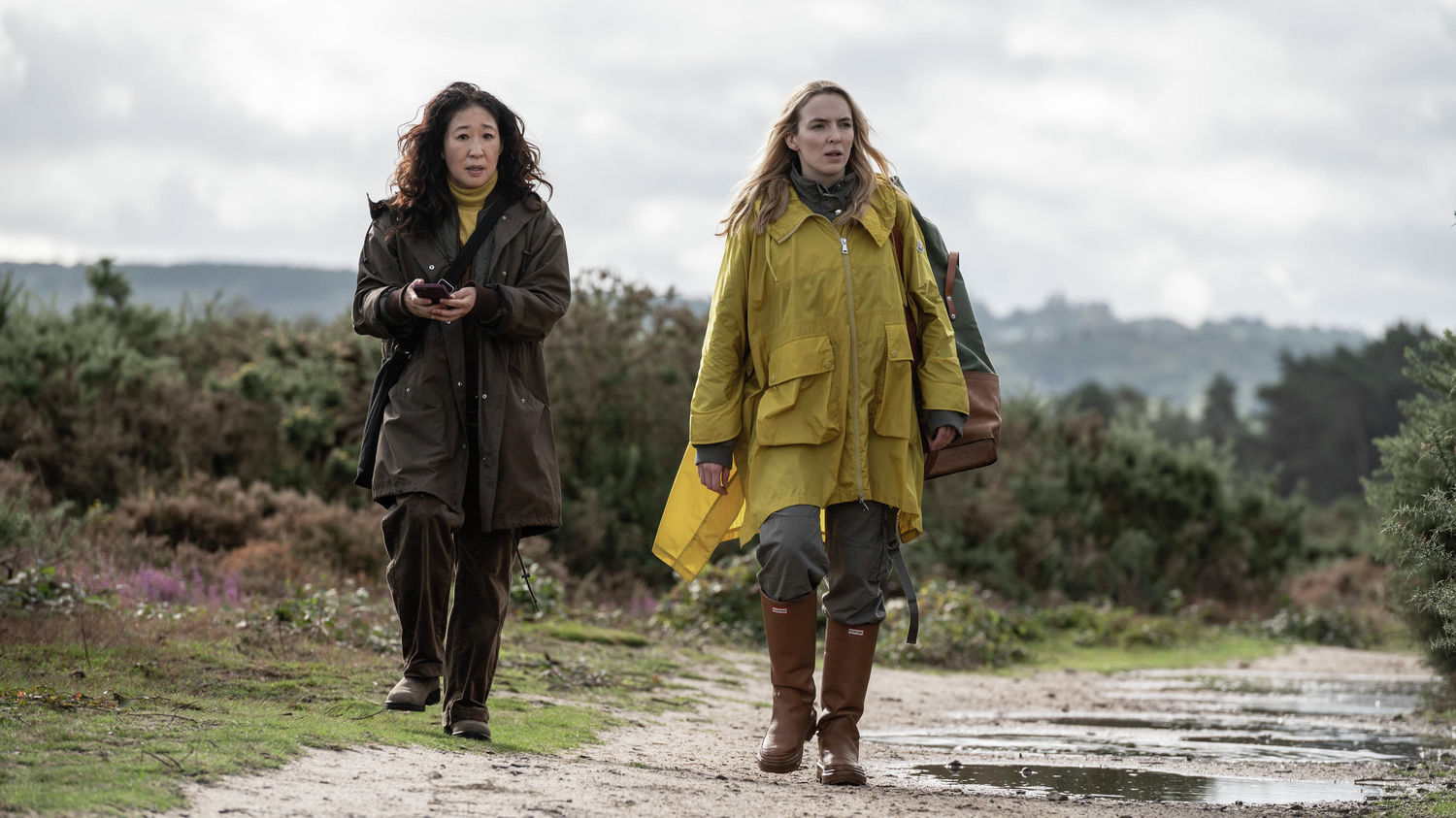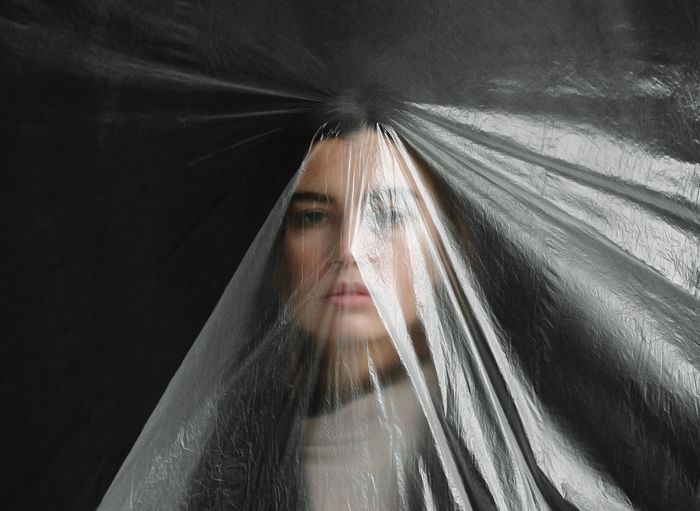Content Note: This article contains discussion of violence against queer women
This article contains spoilers
“Wear it down,” says an unsuspecting nurse to MI5 desk-worker Eve Polastri (Sandra Oh), who is about to tie her hair up. Unbeknownst to Eve, she has just crossed paths with an incognito Villanelle (Jodie Comer), a Russian assassin that British intelligence have been struggling to track down. Even from the sterile confines of a hospital bathroom, where the two women first set eyes on each other, there is tangible bolt of sexual attraction. This electric current would go on to flow between the killer and the blundering-but-perceptive spy throughout all four seasons of the show, with the couple’s relationship finally sparking in the last ever episode before being extinguished completely.
Depicting a complex relationship between two women at the centre of a spy web, Killing Eve detailed an intricate love on the cusp of manifesting into physical sexuality. The pair’s romance, however, fell victim to an endless rotation of script writers and producers, whose visions for the couple were entirely un-unified. Offering a new perspective on female relationships, Killing Eve progressively redefined ‘what women can do’ while positing questions about sexuality and its fluidity. LGBTQ+ audiences watched on patiently as Eve gradually came to terms with her love for Villanelle. Star-crossed lovers, the couple’s fate looked as if it were to finally be sealed in season four. But after a thirty-two episode long game of ‘Will They? Won’t They?’, it seems that writer Laura Neal has committed the ultimate betrayal.
“Queer representation on screen takes a sharp blow, as lesbianism is made out to make characters suffer”
Adapted from the Luke Jennings novels of the same name, Neal makes a drastic deviation from the books’ plot line. Mere moments after Eve and Villanelle share their first kiss, Villanelle is tragically murdered by Carolyn Martens (Fiona Shaw), the former head of the Russia desk at MI6. As Jennings himself describes, the final episode makes a shocking ‘bow to convention’ in a series that appeared to do anything but. Leaving Eve behind, screaming at the death of her lover, the final episode leaves us thinking that queer women are destined to be doomed. Not only is the show’s ending at the expense of the spy and the assassin’s happily ever-after, but it is to the detriment of queer visibility and representation on screen.
From the get-go, LGBTQ+ audiences were drawn to Villanelle’s distinctly queer allure. Often shown to be romancing women, Villanelle’s queerness sat Killing Eve’s existence outside the parameters of the heteronormative world. Unlike in traditional spy thrillers, where only the male protagonist is afforded to be seductively dangerous, Villanelle often becomes all the more attractive — to audiences and characters alike — precisely for her displays of ‘hypermasculine’ violence.
“Villanelle’s queerness sat Killing Eve’s existence outside the parameters of the heteronormative world”
In this subversive reworking of the femme fatale, a trope usually associated with the articulation of male anxieties, Killing Eve appears to do away with the formulaic conventions of cinema and television, that often work to sexualize or punish female figures on screen. Sexuality meets with brutality in a way that seeks to defy limitations of the patriarchy and of heteronormativity. Doubly liberated, the lesbian femme fatale becomes a symbol of unbridled freedom — emblematic of an unrestrained, dangerous womanhood that can only exist outside of society’s patriarchal, heteronormative order. It is precisely this which attracts Eve to Villanelle in the first place. A wealthy, highly-sought after murderer, Villanelle is uninhibited: an embodiment of irrepressible female freedom.

Initially known to Eve that Villanelle harbours romantic feelings for her, an unrelenting chase ensues. Each time audiences thought the couple would get together, one would double cross the other. With the series now hinging on the couple’s sadomasochistic game of cat-and-mouse, fans waited it out to see if the couple would finally surrender to their feelings.
Their romantic chemistry more than noticeable, but with neither Villanelle, nor Eve acting on it, some LGBTQ+ audiences accused Killing Eve of playing out its gayness, especially when Oh seemed to dismiss the potential relationship. However, accusations of queerbaiting became hard to pin on the series, with an ever-changing production team that appeared to understand Eve and Villanelle’s relationship entirely differently. Despite this, the couple’s mutual pull was becoming all the more forceful. As the episodes progressed, even with the numerous obstacles that stood in their way, the two women would always find their way back to one another. Season Three marked a turning point for their relationship, as Villanelle tried to escape the chains of her assassin past. The power imbalance of the pair was to be in play no more. At the close of the season, the two talked on Tower Bridge as equals, their sexual tension melting into sincere understanding. Villanelle expressed empathy for the first time in twenty-four episodes, as Eve admitted she wanted the chaos to end. Season Three’s ending held the door open for Eve to finally accept her queerness.
“Lesbianism is made out to be the metatextual villain”
The fourth and final season delivered exactly that. All that Killing Eve had built up was to happen in the very last episode. Or so we thought. Airing just over a month ago, the two women shared a passionate kiss. LGBTQ+ fans squealed with immense joy, as the couple they had been routing for, finally figured out what audiences had known all along. However, the hint to Baz Luhrmann’s Romeo + Juliet earlier on in the episode, when Eve and Villanelle peer at each other through a fish tank, was not a look to the couple’s star-crossed romance. Rather, it was a foreshadowing to the show’s tragic end. Minutes after their kiss, Villanelle is shot with a sniper. In an unexpected turn, Killing Eve undid all of its hard work. The plot twist that no-one could have foreseen: Neal revived the ‘Bury Your Gays’ trope in a series that tried to kill — quite literally — the damaging limitations of heteronormativity. Moments after Eve confesses her feelings to Villanelle, she is left drowning in grief at her death. Queer representation on screen takes a sharp blow, as lesbianism is made out to make characters suffer.
Many LGBTQ+ fans took to social media to share their disappointment at the return of the trope, expressing their outrage that their queerbaiting suspicions had been confirmed. In an attempt to justify the ending, Neal addressed audiences’ upset by stating that “Villanelle [died] to save Eve [in] a kind of selfless act.” The writer’s comments only double down on the harmful effects of the trope, reducing queerness to something from which one needs to be saved. It seems then that it is not the psychopaths, nor the assassins that are the bad guys of Killing Eve. Instead, lesbianism is made out to be the metatextual villain.
The smile on Eve’s face after kissing Villanelle says it all. She attained the peace she longed for that night on Tower Bridge. There was nothing to save her from. There will be no salvation from Villanelle’s death — neither for Eve nor Killing Eve’s queer audience.


